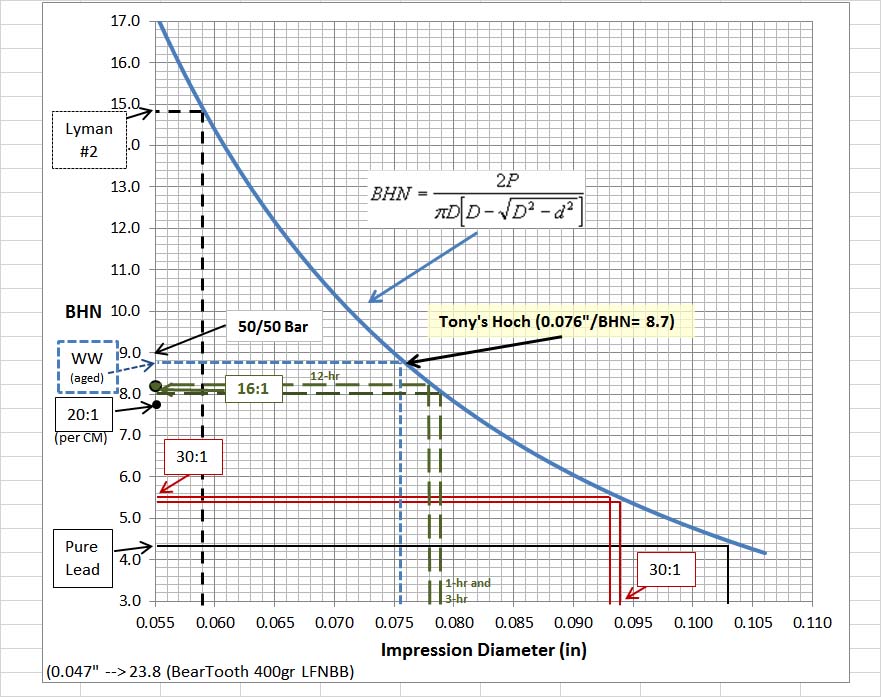I finally got to use my new Lee hardness tester today. It was a little tricky to use that scope. I finally made a stand for it from a clear Tupperware container. It got easier after that, but I still need more practice.
I found my range scrap ingots averaged BHN 9.8, but was surprised that my cast, water quenched boolits (405 gr.)from maybe five months ago tested at 18.6 BHN. Does that make sense that they could havé hardened that much or do I need more practice?
Also, I measured a pure lead ingot and it was just past markings in the scope. When I looked at their table, it doesn’t go near that high. Does that mean you can’t measure pure lead with it?
I am very interested to hear what others think.
Thanks

|
   
   
|


|







 Reply With Quote
Reply With Quote



















